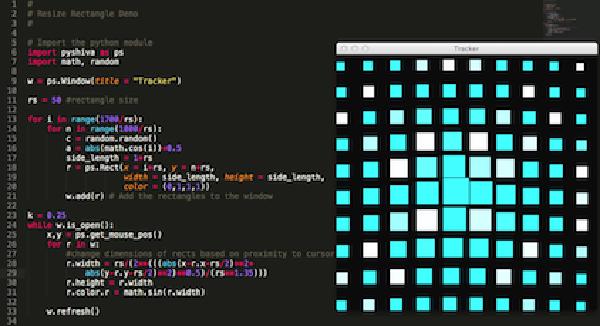
pyShiva
simple 2d vector graphics for python artists Design & Implementation collaborators: Berit Johnson, Diana Vermilya & Charles GwennapGetting computers to draw simple 2d graphics quickly used to be much easier than it is now. Graphics cards are great at drawing triangles but need to be taught to create more complex or organic shapes.
Lots of artists use Processing, but that language has all of the verbosity and incidental complexity of Java with hidden state and complexity approaching OpenGL. Why should an interactive artist need to understand transformation matrices in order to rotate shapes on the screen?
Python is among my favorite prototyping languages, but its graphics libraries leave a lot to be desired (as of 2012).
pyShiva makes graphics programming for Python fun again. The pyshiva Python module provides a simple, object-oriented programming interface for creating stunning 2D graphics for realtime data visualization, games, and general 2D experimentation.
Once setup, pyShiva is relatively easy to use; I was able to teach a young non-programmer how to make her own graphics demos using it over the course of a few hours. You can get it here.
Note that pyShiva is incomplete and its development is on hold. I still think making interactive graphics can and should be much easier, but I’m currently more interested in direct manipulation than coding as a way to empower interactive artists.
Technical Details
pyshiva is a high level Cython extension built on the OpenGL-based ANSI-C ShivaVG graphics library and the cross-platform GLFW windowing library. It abstracts the process of drawing objects via an object-oriented API that enables programmers to create persistent vector graphics objects.